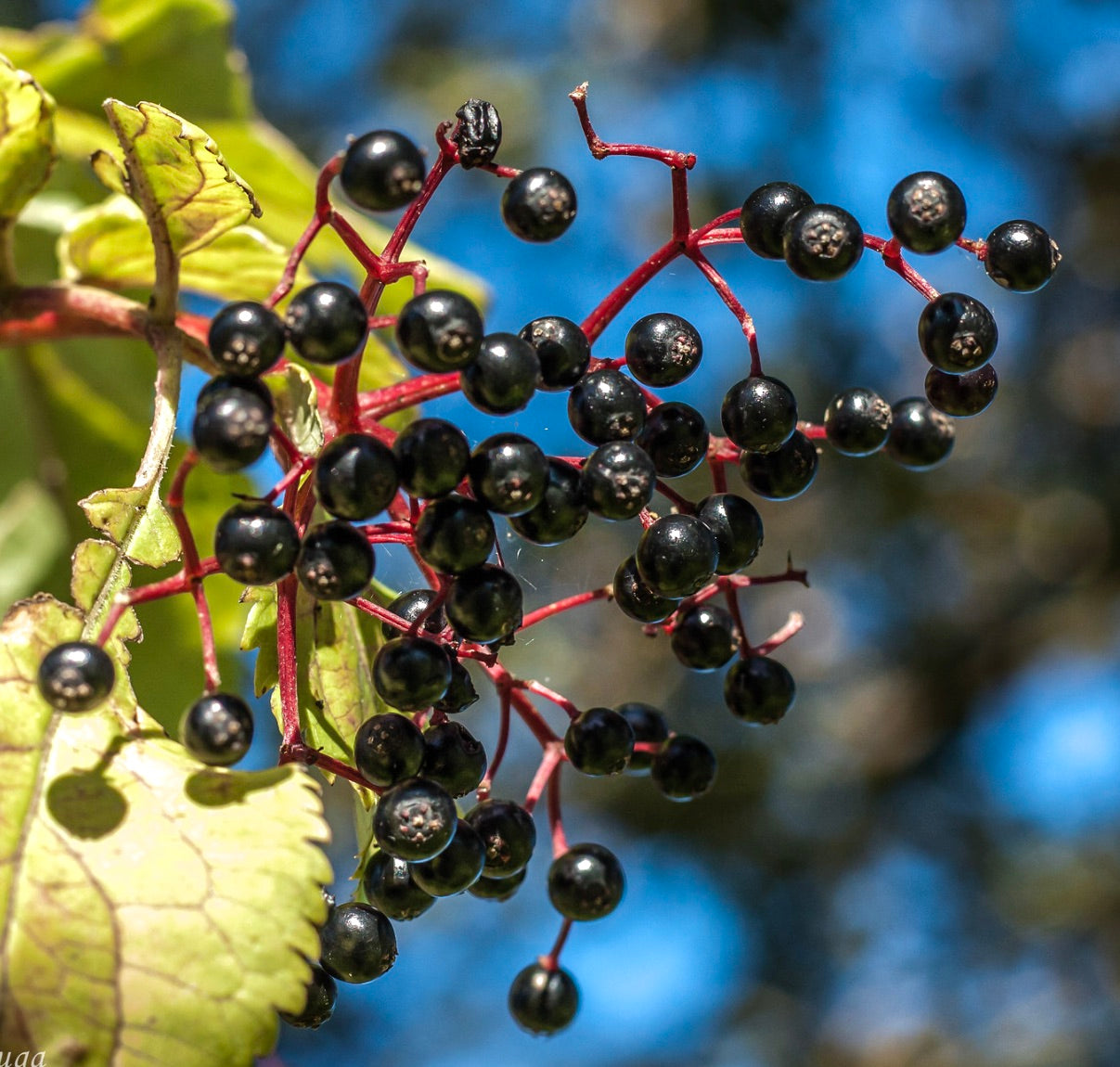- Catalogue Plants
Sambucus nigra 30-50cm
Sambucus nigra 30-50cm
Couldn't load pickup availability
Plant Description
Sambucus nigra, or Elderberry, is a deciduous shrub native to Europe and North America. It is well-known for its clusters of small, fragrant, cream-colored flowers in late spring and early summer, followed by clusters of small, dark purple to black berries in late summer to early fall. Elderberries are valued for their culinary and medicinal uses. The pinnately compound leaves are bright green and serrated, creating a lush and attractive appearance. This versatile plant has been used for centuries in traditional herbal remedies and is cherished for its culinary applications in jams, pies, syrups, and beverages.
Cultivation:
-
Location: Plant Elderberries in a location that receives full sun to partial shade. They can tolerate a range of conditions but prefer well-drained soil.
-
Soil: Elderberries thrive in moist, fertile, and well-draining soil. Amending the soil with organic matter can improve its fertility and moisture retention.
-
Planting: Plant Elderberries in the early spring or late fall. Space multiple shrubs at least 5 to 10 feet apart to allow for their mature size.
-
Watering: Provide regular watering, especially during the first year after planting to establish a strong root system. Once established, Elderberries are relatively drought-tolerant.
-
Fertilization: Elderberries typically do not require heavy fertilization. A balanced, slow-release fertilizer applied in the spring can provide necessary nutrients.
-
Pruning: Prune Elderberries in late winter or early spring to remove dead or weak branches and shape the plant. This helps maintain its vigor and encourages new growth.
-
Pests and Diseases: Elderberries are generally resistant to most pests and diseases. However, keep an eye out for aphids or powdery mildew, and address these issues promptly if they occur.
-
Harvesting: Harvest Elderberries when they are fully ripe and dark purple to black in color. Use them for culinary purposes like making jams, jellies, pies, or medicinal preparations such as elderberry syrup.
-
Propagation: You can propagate Elderberries through hardwood cuttings, softwood cuttings, or by collecting and planting the seeds. Softwood cuttings are typically taken in early summer, while hardwood cuttings can be taken in late winter.
-
Edible and Medicinal Uses: Elderberries are not only prized for their culinary versatility but also for their potential health benefits. They are rich in antioxidants and are believed to have immune-boosting properties.
Sambucus nigra, or Elderberry, is a valuable and multi-purpose shrub that adds beauty to your garden while providing edible and medicinal treasures. By following these cultivation tips and caring for your Elderberry plant, you can enjoy its bountiful harvest and potential health benefits.
IMPORTANT: Please be aware that picture 1 show adult plant not for sale, the offer is for a plant in the dimension indicated in title description.
Botanical family: Adoxaceae
Botanical genus: Sambucus
Botanical species: Sambucus nigra
SKU:BA-1225-S
Cultivation
Cultivation
Info and Disclaimers
Info and Disclaimers
Plant Height: 30-50cm
Plant Diameter:
Pot Size:
Grafted/Not Grafted:
Disclaimer: Be aware that most plants change across seasons. If present foliage, could have been fallen or change in its color.


